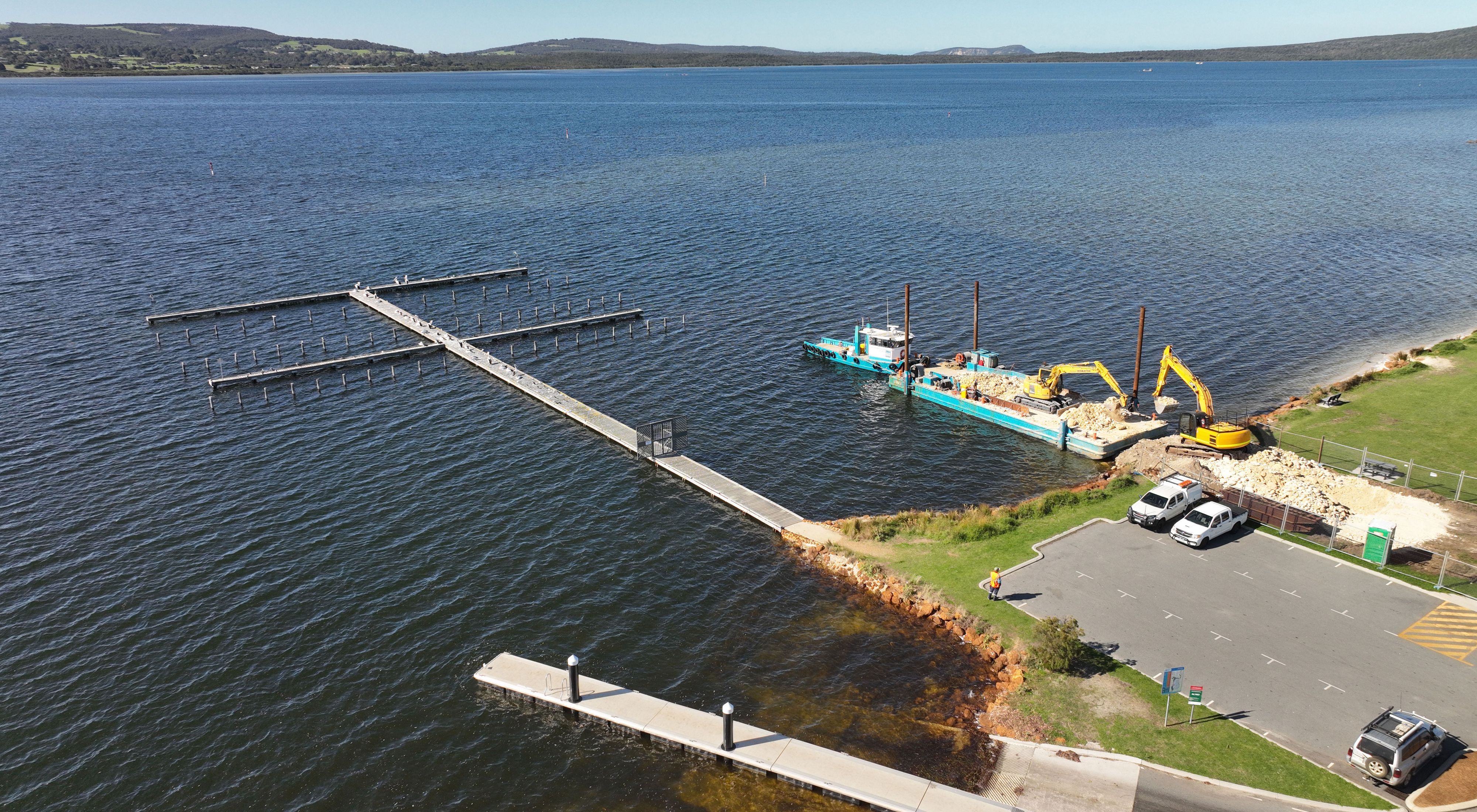Works to restore more than 2 ha of native shellfish reefs gets underway to bring back native ecosystem in Oyster Harbour
Media Contacts
-
Vanessa Billy
Communications Manager
The Nature Conservancy Australia
Phone: 0478 638 180
Email: vanessa.billy@tnc.org
The Nature Conservancy Australia (TNC) is leading the second phase of shellfish reef restoration in Oyster Harbour, Western Australia, with the construction of an additional 2 ha of native shellfish reefs commencing in April building on the 1 ha of reefs restored in 2019/2020.
Oyster Harbour is one of 13 locations selected for shellfish reef restoration under Reef Builder, a partnership between TNC and the Australian Government, which aims to bring back shellfish reefs from the brink of extinction while providing economic stimulus for local communities.
Brett Dal Pozzo, TNC’s WA Oceans Manager, said this was a very exciting milestone for TNC’s shellfish reef restoration projects in Western Australia, as well as the national Reef Builder program.
"These shellfish reefs will help support the health of the harbour and its marine life, while boosting the recovery of shellfish reef ecosystems across southern Australia,” Mr Dal Pozzo said.
Native flat oyster reefs (Ostrea angasi) were once prolific in southern Australian estuaries and bays, and defined Oyster Harbour for early European settlers but, due to a combination of overharvesting, water quality and disease over the last century, have been driven to the brink of extinction.
“Recent improvements to the health of Oyster Harbour have seen seagrass come back to historic levels, but not so with our shellfish reef habitats, with bare nutrient rich sediments still dominating the deeper parts of the harbour,“ Brett Dal Pozzo said.
“This is an exciting next step for our reef restoration work in Albany, and builds on the previous work TNC led from 2017-20, where two reefs covering about 1 ha of the estuary bed were constructed south-east of Green Island. These reefs host a diversity of fish and invertebrate species, including silver trevally, snapper, and sea cucumber,” he said.
This current phase of the project will use 3,500 tonnes of local limestone to build an array of reef units at two locations within Oyster Harbour, commencing 27 April. These reefs will then be seeded in May with close to 1 million native Flat oysters, grown at the Albany Shellfish Hatchery from local wild broodstock.
“We are thrilled to be delivering this new phase of the project, which will help scale-up the effort to improve local water quality and biodiversity in the harbour, as well as boost fish productivity for many important recreational and commercial fish species”
“The project will support the local economy through job creation and the use of local contractors during the construction of the reef and through ongoing opportunities for marine education and recreational fishing. We currently have seven local businesses contracted on the project, ranging from rock supply to diving services. We’ve also had TNC staff diving the reefs over summer, with video footage highlighting the opportunity for the reefs to become a local attraction,” Mr Dal Pozzo said.
Geoff Bastyan, local marine restoration expert and recent Citizen of the Year for his decades of work in restoring seagrass within Albany Harbours, has been involved in the shellfish reef restoration project since 2015. As well as installing the initial trial sites, Geoff has regularly dived on the reefs as part of TNC’s ongoing monitoring and provided critical local knowledge into the design and planning for the current reefs.
“We have seen the current reefs continue to grow into benthic habitats, supporting a range of marine life. The fish life on these reefs, compared to the nearby bare sediments, is remarkable,” M. Bastyan said.
The Nature Conservancy will continue to monitor the reefs, and provide regular updates to the community, throughout 2023.
View photos and videos of this project.
The Nature Conservancy is a global conservation organisation dedicated to conserving the lands and waters on which all life depends. Guided by science, we focus on getting things done efficiently and with the greatest positive impact for conservation. We’re a trusted organisation working in more than 70 countries and territories around the world on innovative solutions to our world’s toughest challenges so that nature and people can thrive together. To learn more about The Nature Conservancy in Australia, follow us on Facebook.
